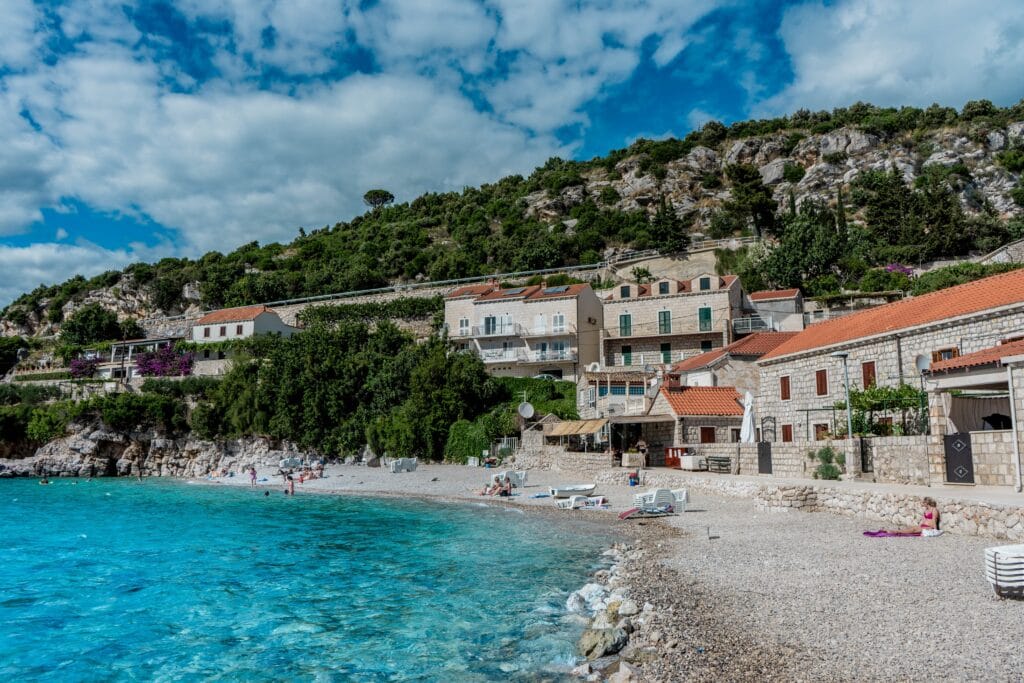Are you planning on traveling to Croatia or sending money home? You’ll need to turn your USD, euros, pounds, or other currency into Croatian kuna.
Are you looking for the current kuna to dollar (or dollar to kuna) exchange rate? Here’s today’s rate with Remitly.
Since 1994, the official currency of Croatia has been the Croatian kuna (HRK). 2022 is the final year of the kuna, as it is scheduled to be replaced with the euro on January 1, 2023.
The sign used to denote the Croatian kuna is kn. The currency is subdivided into 100 lipas. The Croatian National Bank issues the kuna, and the Croatian Monetary Institute mints coins.
- Frequent kuna banknotes used are 10, 20, 50, 100, 200, and 500kn notes. Although 5 and 1,000kn notes exist, they are rarely used.
- Frequent lipa coins used are 5, 10, 20, and 50 lipa coins, as well as 1, 2, and 5kn coins. While 1, 2, and 5kn coins are in circulation, they are rare.

1. Kuna means “marten.”
Calling back to Croatia’s historical use of marten pelts to trade in medieval Europe, the name of Croatia’s banknote currency, the kuna, means “marten.” Martens are weasels found throughout Europe that were once prized for their fur.
Lipa means “linden tree,” a tree species often planted around marketplaces in Croatia during the Hapsburg Monarch rule.
2. The kuna is a relatively new currency.
The Croatian kuna was introduced in 1994 as the country transitioned away from using the Croatian dinar. This is because, in 1991, Croatia declared its independence from the Socialist Republic of Yugoslavia.
At that time, one kuna was equivalent to 1,000 dinars at a fixed exchange rate. The name kuna was chosen to represent the country’s history.
3. Kuna banknotes feature prominent Croatians and architecture.
Kuna banknotes feature prominent historical figures in Croatian history and culture. The 1,000 kuna features on one side Ante Starčević, a Croatian political leader, and the Zagreb Cathedral on the other. The 500 kuna note, an olive green bill, features Marko Marulić, a Croatian poet, on one side and Diocletian’s Palace in Split on the other.
4. Lipa coins alternate designs by years.
Croatian coins, known as lipa, alternate designs by even and odd years. Those minted in odd years feature plants and animals with names in Croatian. Those minted in even years feature similar designs, but with text in Latin.

5. The euro will soon replace the kuna.
Croatia is a member of the European Union and will begin using the euro as its currency in 2023. Croatian bank accounts and credit cards will be automatically converted to euros, and individuals will be able to exchange their kuna and lipa for euros at no charge. Between January 1 and January 15, 2023, individuals will be able to pay using kunas but will receive their change in euros.
About Croatia
Croatia is a small yet geographically diverse country located in Europe on the northwestern part of the Balkan Peninsula. Its capital city is Zagreb, located in the northern part of the country. The Croatian republic is home to over 4 million people, with 800,000 living in its capital city. Croatia borders the Adriatic Sea on the west, Slovenia to the north, Hungary and Serbia to the east, and Bosnia and Herzegovina to the south.
Although Croatia was ruled for centuries by various foreign powers, it remained Western-European-oriented in culture, acquiring the Latin alphabet and Western European political and economic traditions and institutions. A part of Yugoslavia for much of the 20th century, Croatia suffered from the disintegration of the federation in the 1990s. Croatia became a member of the European Union in 2013.
Croatians identify predominantly as ethnically Croat, with smaller ethnic Serb and Bosniak populations, among other ethnic groups. The majority of the population identifies as Roman Catholic (86.3%), with smaller populations of Eastern Orthodox Christians, non-religious groups, and Muslims. Croatian is the national language and is written with the Latin alphabet.